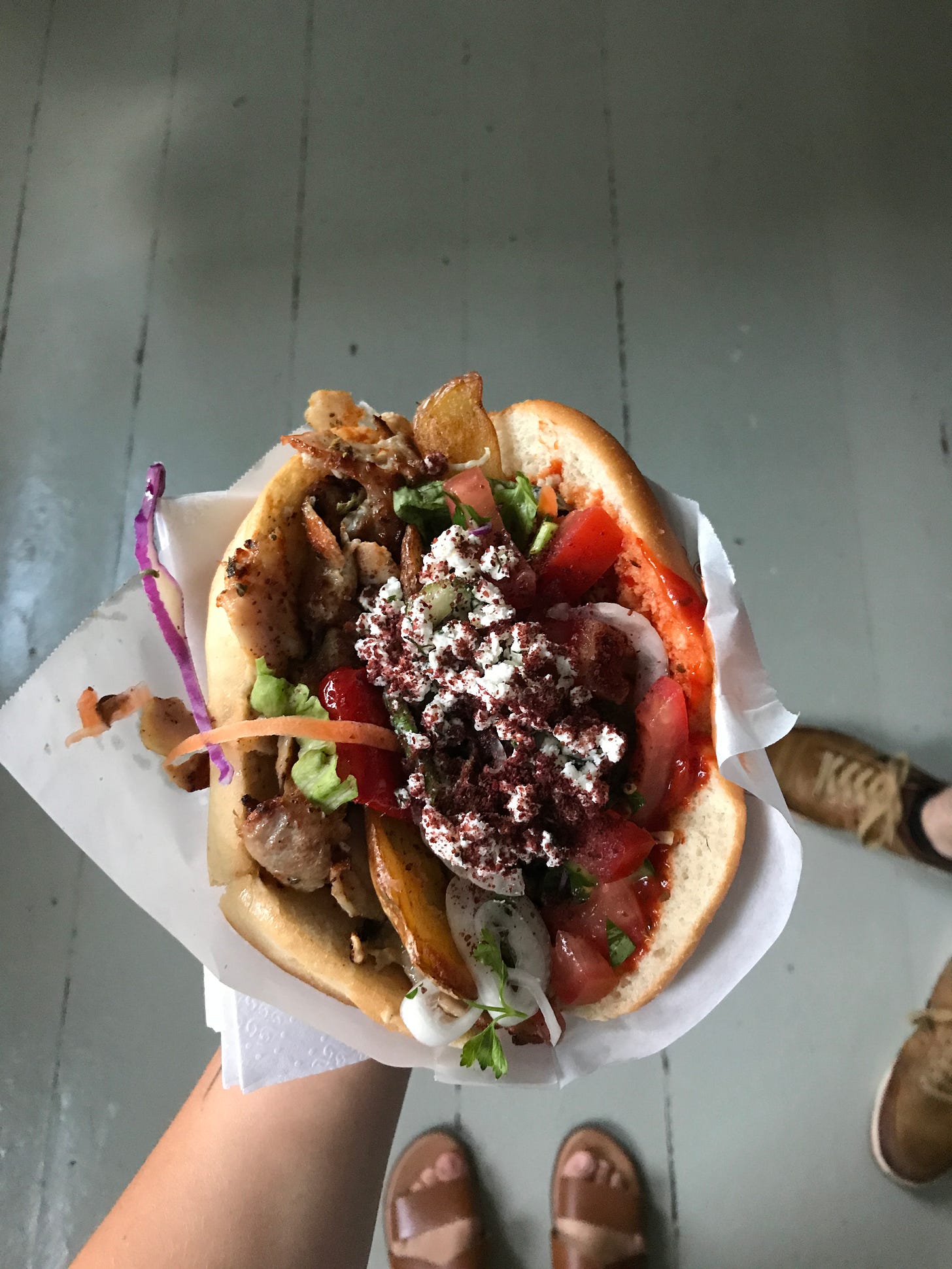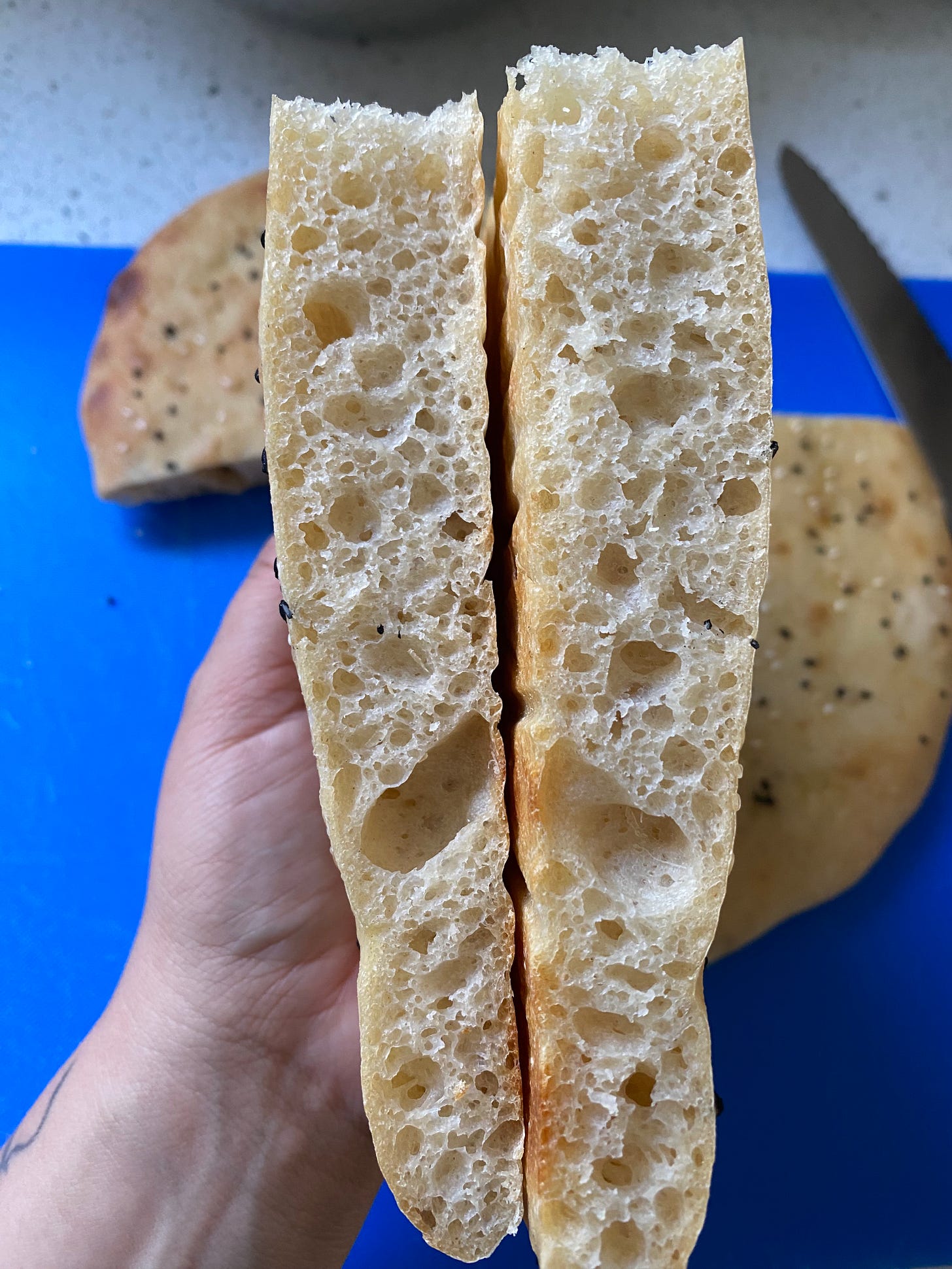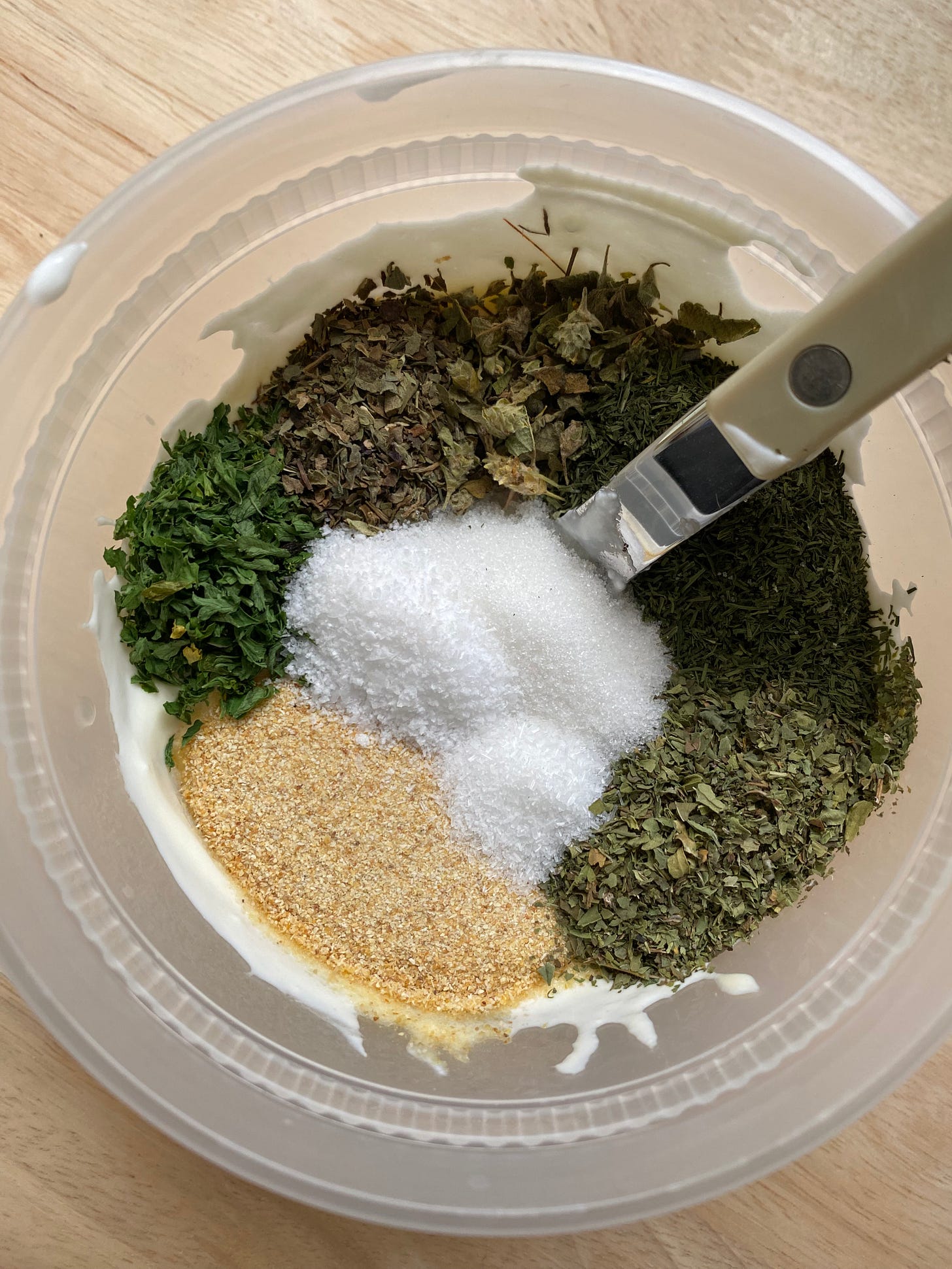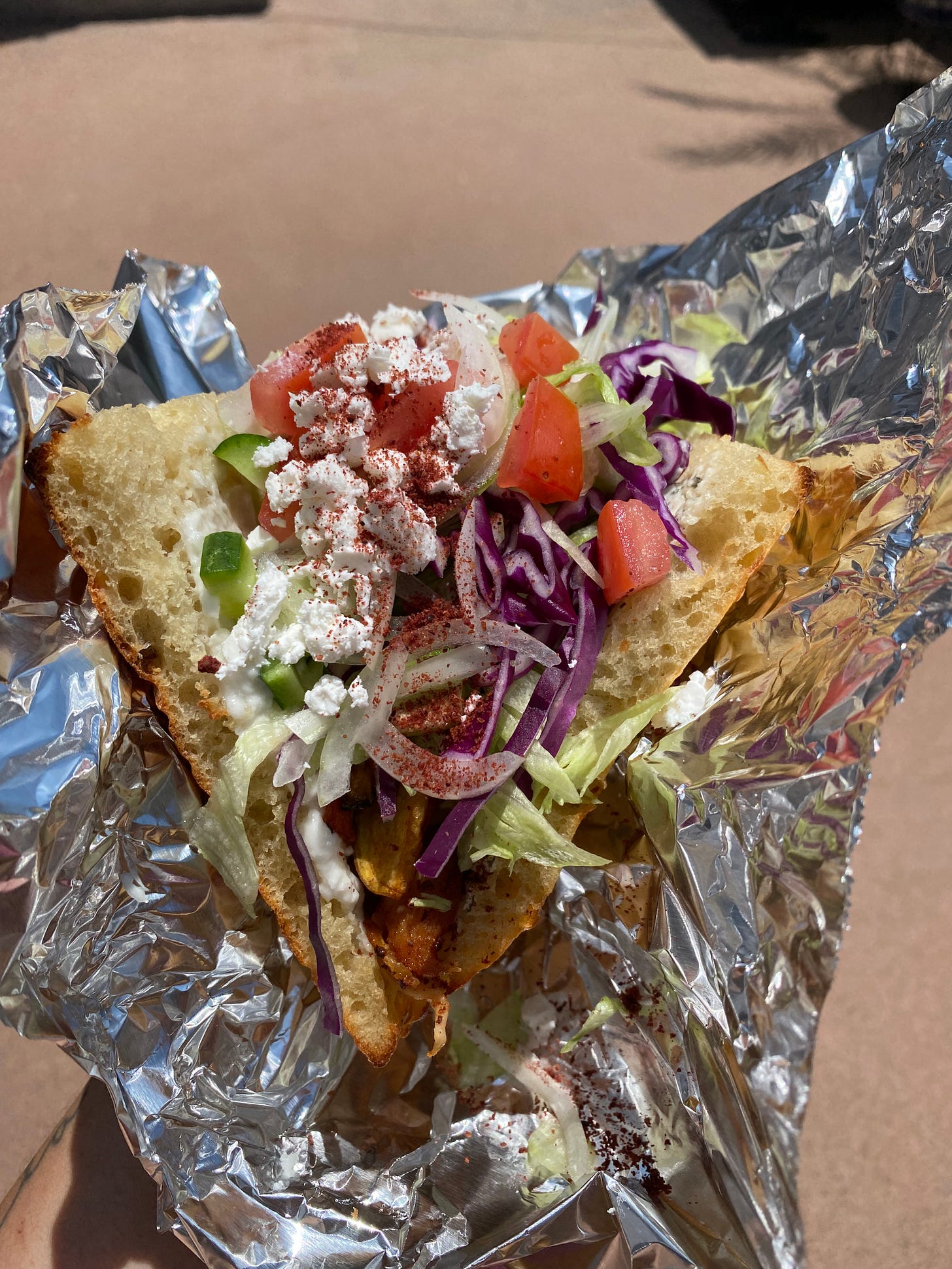This move has moments where it feels like our move to Berlin. The trips and appointments to the DMV for car registration, getting a new license, finding a new doctor, dentist, therapist, etc. remind me of days of applying and renewing my Schengen visa—but thankfully this time in my mother tongue. Berlin also felt like a fresh start (in a good way, and a “your world is your oyster” kinda stress way). I had to discover a whole new routine, I had no friends and had to learn how to make new, I had a new job, or once my visa changed, searched for what kind of work I was even interested in doing. Learned new systems, a new language, new culture, new way of life. Now in San Diego we’re discovering a new routine, figuring out how to make a new community, finding new work, and even looking at language schools. So to scratch the itch of this familiar feeling I’ve been having recently, I’ve had two successful tests of recreating my nostalgic berliner comfort food (next to spätzle and currywurst): the döner kebab.
The original döner kebab was created in around 1855 in Istanbul, Turkey and brought over to Germany by the hundreds of thousands of turkish migrants who went to help and rebuild the country after WWII. The Berlin style döner kebab has since evolved into and come to be the entirely new food of Berlin in it’s own right. There are over 1000 shops selling döner in Berlin, ranging from the more traditional, simple döner, ones with minced kebab, or a spit of layered lamb and beef, ones that feel special with fresh bread made in house, and ones “lighter” or more “elevated” that is called a gemüse kebab.
Though gemüse means vegetables in German, this kebab isn’t vegetarian, but made with chicken. Due to the mad cow disease epidemic in the 90’s, consumers feared beef, so the gemüse kebab came to be. Traditional lamb and beef döner has veggies like iceberg lettuce, red cabbage, cucumber, tomato, onion. To elevate the traditional döner, gemüse kebab has that salad base plus gently fried eggplant, carrot, and potato. As well as feta cheese and a sprinkle of sumac.
I sadly can’t remember where I bought my first döner, but my first ever gemüse kebab was at Mustafa Demir’s Gemüse Kebap in Friedrichshain, right around the corner from the temp Airbnb we were staying at while trying to find an apartment to rent.
The veggies are the easiest to recreate here in the states, but I set out to recreate the other 3 key components: the bread, the meat, and the sauces. (after a lot of intensive research).
Brot. The bread
Living next to a Mediterranean market that bakes fresh bread, I thought I’d have some luck getting ahold of some döner bread, but sadly I had no luck. Fladenbrot (turkish pide bread) is pillowy, light, chewy texture, yeasted, and has a soft crust thats sprinkled with sesame seeds and nigella (black cumin) seeds. When sliced into, you can see its beautiful crumb which gives us that pillowy texture. To achieve this crumb, I knew I’d be working with a dough of high hydration (aka a high water to flour ratio, and a very sticky dough). In my research I found that it was a pretty basic dough: flour, salt, yeast, water. But I saw mostly all purpose flour being used, so I added some semolina flour to give me some of that chew we’re looking for. My final measurements were:
300g all purpose flour 20g semolina 4.5g yeast 7g salt ~200-220g water. (Optional but also a little bit of sourdough starter for added bubblage, fermenty fun too)
I mixed all the ingredients till combined, then let it rest for 30 minutes, where I then performed 2 stretch and folds every half hour. Let it rise for an hour, or until bubbly. Placed it on a large baking sheet where i gently pressed it into a circle (similar method to working with focaccia dough). Gave it an egg wash, sprinkled on the sesame and nigella seeds. Let it rest for another 30 minutes to hour, and then baked it at 485 degrees F for 10-15 minutes or until golden brown. Then let it cool until it was time to assemble. For assembly: I sliced it in quarters, yielding us 4 breads with a little triangle top (key part of the döner bread look!). Each bread I sliced open, but leaving the bottom connected, basically like a pita bread vibe. Döner bread is typically put into a panini press to toast up the outside, give it the iconic look, and squish it so the bread to filling ratio is high on filling, low on bread thickness. I don’t own a panini press, so I used a cast iron press and pressed it onto a hot cast iron skillet to toast. It did the job, just didn’t give me the iconic look.
The meat.
As you may know, kebab is made on a rotating spit, then sliced thinly with a large sharp knife, or sometimes a meat shaver. So this was the hardest part of this whole recreation at home without owning a rotating spit. However, I found a cheat way that definitely wasn’t a 100% match, but did the trick and was still delicious.
At my local shop I got 2 chicken legs (connected thigh + drumstick) boneless, skinless. I marinated it, in the fridge, overnight, with 4 Tbsp yoghurt 2 Tbsp paprika powder 1 Tbsp dried oregano 2 tsp dried thyme 2 tsp dried basil 2 tsp salt (aim for 1 tsp per lb of meat). The next day, I place the chicken legs on a parchment lined baking sheet in a single layer, then froze overnight. The meat at this point can be bagged/stored until whenever you’d like to make kebab. When it came time to cooking, I used my sharpest knife to cut the frozen meat into super thin slices. This part is the most annoying, needing a solid knife, some elbow grease, and some patiences. But it’s worth it. When you’re nearly finished slicing, I recommend preheat a cast iron skillet to high heat, and once the pan is smoking, add the frozen sliced meat and cooking until deeply golden brown. It won’t take long to cook, it’s mainly about the color here.
Soße. The sauces.
Traditionally, there are three types of sauces you can choose from for your döner: kräuter (herb), knoblauch (garlic), and scharf (spicy). In Berlin you typically choose only 2, never all three. My go-to was always kräuter and scharf. The kräuter (herb) sauce is a pretty classic yogurt + mayo base sauce. I chose: 1 cup full fat greek yoghurt 1/4 cup mayo .5 Tbsp sugar .5 tsp salt .5 Tbsp white vinegar .5 Tbsp dried mint .5 tsp dried oregano .5 tsp dried basil .5 tsp dried parsley 1 tsp fresh dill and a pinch of MSG (we’re recreating a Berliner street food here after all..)
For the scharf (spicy) sauce, it’s pretty much like a harissa style spice level. I roasted 1 bell pepper, 6 red chilies (like fresno) with some olive oil until the skin was charred and blistered. Then removed the skin, and placed them into a blender with 3 garlic cloves, 1/8th cup white vinegar, 1 Tbsp olive oil, .5 tsp dried thyme .5 tsp dried oregano, and a generous pinch of salt. Then gave it all a blend until smooth.
My recreation will never be my first bite of a berliner kebab, nor as good as the ones I’m missing and longing for. But, taking a bite brought me nostalgia, and it was delicious, so for that, it was a success. We’ve now just had them during a lunch break or for dinner and washing them down with a topo chico or an iced tea. But makes me miss the days of biking to Imren Grill in Hohenstaufenplatz. Eating it at the park in the plaza as a snack, eating it quick enough to avoid the many buzzing and chasing wasps one battles during a Berlin summer. Washing it all down with a club mate, mio mio, or a fritz kola. Or the better hour to consume a döner, after a late night out or coming home from a concert. At the end of our block and by the entrance/exit of our U-bahn station, we had a spot called Döner Zimmer which was the perfect walk home treat. With a 1 € cold beer from a späti.
There were some parts that were extremely hard about being an expat in a new country, and some moments I’d never want to experience again. But there were also a lot of fun parts, and some moments I try to experience again in my mind and hope I will never forget. Letting this serve as a reminder that the same can happen for this move too. There is so much still to come.
Resources:
@mynameisandong on Youtube— a true Berliner, with all the resources, knowledge, and taste of the real deal döner
@ProHomeCooks on Youtube— great resource on how to work with the bread portion of this recreation
@EthanChlebowski on Youtube— a great resource on the meat technique I used.









🥲🥲🥲 I miss living there with you
I want it this so bad
& I love thinking about your life there + my first discovery of court online <3